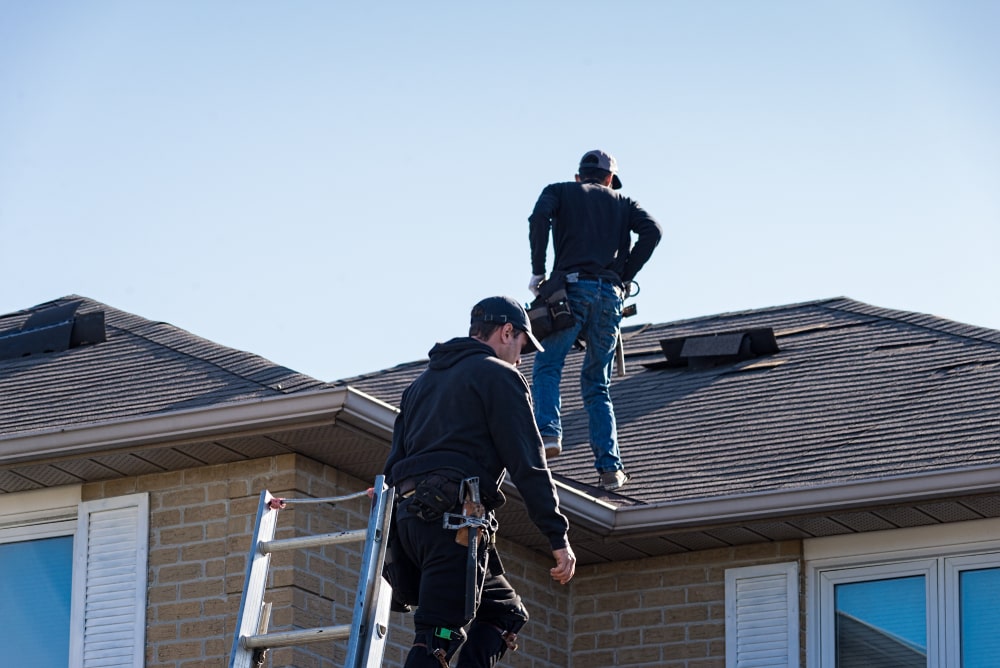Roofing construction is a vital part of any building project. Whether you’re constructing a new home or repairing an existing roof, several key considerations must be remembered. These considerations ensure the roof is safe, durable, and can withstand the elements. This guide will explore the essential factors for roofing construction, from selecting suitable materials to hiring the best contractors.
Understanding Roofing Basics
Before diving into the specifics, it’s essential to understand the basics of roofing construction. A roof is the first defense against weather conditions such as rain, snow, and wind. It also provides insulation, helps maintain indoor temperature, and adds to a building’s overall aesthetic.
Components of a Roof
A typical roof comprises several components, each playing a crucial role in its function and durability:
-
Shingles or Tiles: These are the roof’s visible outer layer that protects from the elements.
-
Underlayment: This layer sits beneath the shingles or tiles and offers additional protection against moisture.
-
Roof Deck: This is the surface, usually plywood or OSB (Oriented Strand Board), to which the roofing materials are attached.
-
Flashing: These are metal pieces installed in areas prone to leaks, such as around chimneys, vents, and valleys.
-
Gutters and Downspouts: These components help direct water away from the roof and the foundation of the building.
Choosing the Right Roofing Materials: 7 Key Points
-
Climate Suitability: Ensure the roofing materials can withstand Hagerstown’s diverse weather conditions, including heavy rain, snow, and wind. Selecting materials specifically designed for your local climate ensures better performance, longevity, and protection for your home throughout the year.
-
Durability and Lifespan: Opt for roofing materials known for their durability and long lifespan. Durable materials, like metal or slate, reduce the need for frequent repairs and replacements, ensuring your roof remains strong and reliable for many years, saving you money and hassle.
-
Energy Efficiency: Choose roofing materials that provide good insulation and reflectivity. Energy-efficient materials help regulate indoor temperatures, reducing the need for heating and cooling. This lowers energy bills and minimizes your home’s environmental impact, making it more eco-friendly.
-
Cost and Budget: Consider the initial and long-term expenses of roofing materials. Some options may be cheaper upfront but require more maintenance or have shorter lifespans. Balancing affordability with quality ensures a cost-effective and durable roofing solution for your home.
-
Local Building Codes and HOA Rules: Ensure roofing materials comply with local building codes and homeowner association (HOA) rules. Certain materials may be restricted or require specific approvals. Adhering to regulations ensures your roofing project meets legal requirements and avoids potential fines or delays.
-
Maintenance Requirements: Consider the maintenance needs of roofing materials. Some materials, like asphalt shingles, require periodic inspections and repairs, while others, such as metal or slate, have lower maintenance requirements. Choosing low-maintenance materials can save time and money in upkeep over the roof’s lifespan.
Understanding the Roofing Installation Process
Understanding the roofing installation process helps you know what to expect during the project. Here are the typical steps involved:
-
Initial Consultation and Inspection: The roofing installation begins with an initial consultation and inspection. A professional contractor will assess your roof’s condition, discuss your needs and preferences, and recommend the best approach to ensure a successful roofing project.
-
Choosing Materials: Suitable roofing materials are crucial for a successful project. Consider factors such as climate suitability, durability, aesthetic appeal, energy efficiency, cost, and maintenance requirements. Choosing materials that align with your needs and preferences ensures a functional and visually appealing roof.
-
Preparing the Site: Preparing the site is a critical step in roofing installation. It involves clearing the area around the house, ensuring safety measures are in place, and making necessary repairs or adjustments to the roof deck before installing new roofing materials.
-
Installing the Underlayment: Installing the underlayment is essential to roofing construction. This layer of material, typically made of felt or synthetic material, provides an additional barrier against moisture and helps protect the roof deck from potential damage caused by water infiltration.
-
Installing the Roofing Materials: Roofing materials are critical to the construction phase. It involves carefully placing and securing shingles, tiles, or other materials according to manufacturer specifications. Proper installation ensures the roof is weather-tight and provides durable protec12tion for your home or building.
-
Adding Flashing and Ventilation: Adding flashing and ventilation components is crucial to a well-installed roof. Typically made of metal, flashing prevents water from seeping into vulnerable areas like chimneys and valleys. Proper ventilation ensures airflow, reducing moisture buildup and extending the roof’s lifespan.
-
Final Inspection and Cleanup: The final inspection involves thorough scrutiny to ensure the roof installation meets quality standards and adheres to manufacturer guidelines. Cleanup includes removing debris, ensuring the site is safe, and leaving your property in pristine condition post-installation.
Conclusion
Roofing construction is a significant investment that requires careful planning and consideration. By understanding the key components, choosing suitable materials, hiring a professional contractor, and maintaining your roof, you can ensure a durable and long-lasting roof for your home. If you’re in Hagerstown and need expert roofing services, consider High Point Roofing for your project. Their experienced team can help you navigate the complexities of roofing construction and provide top-notch service. Considering these critical considerations, you can ensure your roofing construction project is successful, and your new roof will protect your home for years.


